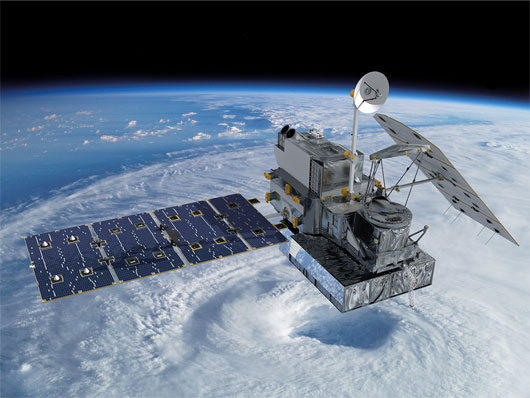Prepare to launch a global rainfall measuring satellite GPM
GPM will use the same exploration method as its predecessor, built on previous technology. Satellite is equipped with a short-wave radiation meter to measure the amount and intensity of rain and snow. In addition, GPM also carries a dual band radar with the ability to probe inside a cloud system and send detailed data of each cloud layer.
In addition, GPM is equipped with advanced sensor system to detect snowfall and light rain. This is an important step in the observation of rain. The inability to detect certain types of rain such as sleet shows a flaw in previous attempts to create a truly global meteorological observation system. These types of rain appear more often at high latitudes.

The GPM mission has many practical applications related to observing the impact of various levels of rain on the environment. GPM will be a great tool to quantify the global water cycle - a factor that significantly affects agricultural production in many parts of the world. In addition, GPM can also provide more accurate warnings about natural disasters such as floods and storms from tropical depressions. Thereby, by predicting the path of the storm, people will have more time to evacuate and minimize human damage.
Currently, GPM has completed the testing stages and is ready to leave the launch pad. Satellite will begin to function normally after about 60 days after launch. Data from satellites will be processed and updated on the Internet.
- NASA launches a satellite measuring soil moisture
- Japan launches satellite tracking global rainfall
- NASA is ready to launch satellites to measure CO2 on Earth's atmosphere
- Japan is about to launch a global disaster observation satellite
- China launches satellite global data transfer
- South Korea announced the successful launch of the satellite
- SpaceX launches satellite Internet, testing the global Internet broadcasting project
- China completed the construction of the fourth satellite launch center
- China's first coastal satellite launch pad
- Europe's satellite launch is postponed
- Myanmar thanks Japan to launch a global observation satellite
- Vietnam will launch the third satellite in the second quarter of 2013
 Van Allen's belt and evidence that the Apollo 11 mission to the Moon was myth
Van Allen's belt and evidence that the Apollo 11 mission to the Moon was myth The levels of civilization in the universe (Kardashev scale)
The levels of civilization in the universe (Kardashev scale) Today Mars, the sun and the Earth are aligned
Today Mars, the sun and the Earth are aligned The Amazon owner announced a secret plan to build a space base for thousands of people
The Amazon owner announced a secret plan to build a space base for thousands of people